Maintaining Emotional Wellness: Living with AMD
Featuring
Kiana Harlan, MSW, LCSW
Licensed Clinical Social Worker at Kaleidoscope Dream Counseling
Jill Adelman
Macular Degeneration Advocate
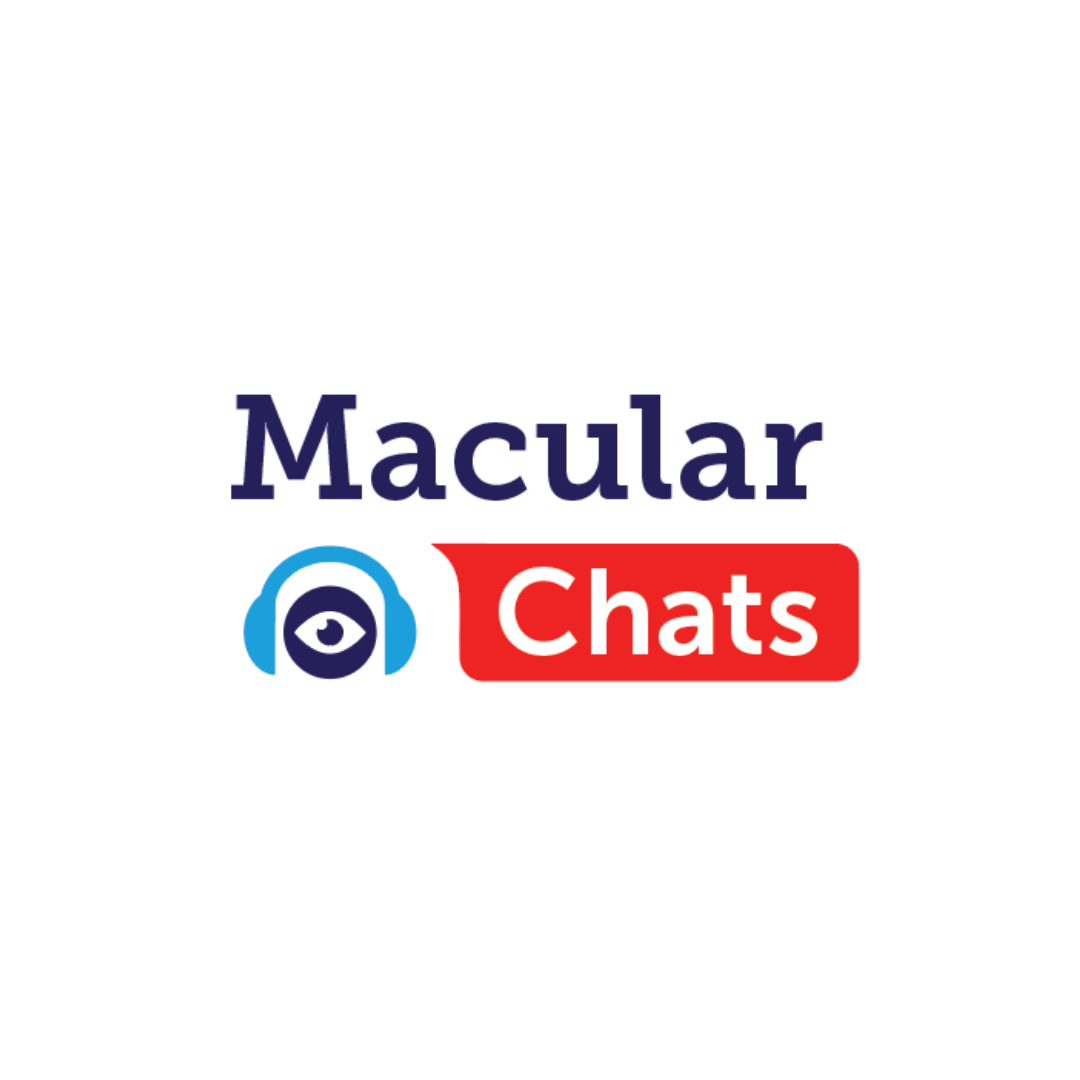

Kiana Harlan, MSW, LCSW
Licensed Clinical Social Worker at Kaleidoscope Dream Counseling
Jill Adelman
Macular Degeneration Advocate

After a diagnosis of macular degeneration many individuals experience a range of emotions, including grief, anxiety, or depression. Our expert guest defined and discussed different emotions, as well as provided specialists and additional coping strategies and resources to consider. Kiana Harlan is a Licensed Clinical Social Worker and the owner of Kaleidoscope Dream Counseling, a mental health practice spanning across Colorado, Florida, North Carolina, and Virginia. As a dedicated Psychotherapist, Kiana specializes in guiding adults through the intricate process of recovering from the impacts of interpersonal trauma, grief and loss, and anxiety. Her approach is holistic and explores the emotional, somatic, and relational dimensions of healing.
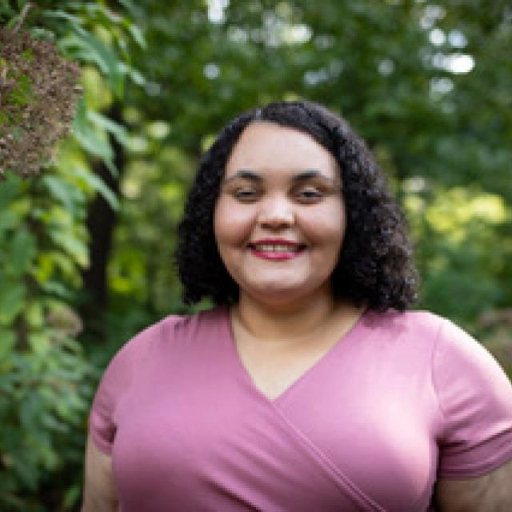
Kiana is a Licensed Clinical Social Worker and the owner of Kaleidoscope Dream Counseling, a mental health practice spanning across Colorado, Florida, North Carolina, and Virginia. As a dedicated Psychotherapist, Kiana specializes in guiding adults through the intricate process of recovering from the impacts of interpersonal trauma, grief and loss, and anxiety. Her approach is holistic and explores the emotional, somatic, and relational dimensions of healing.
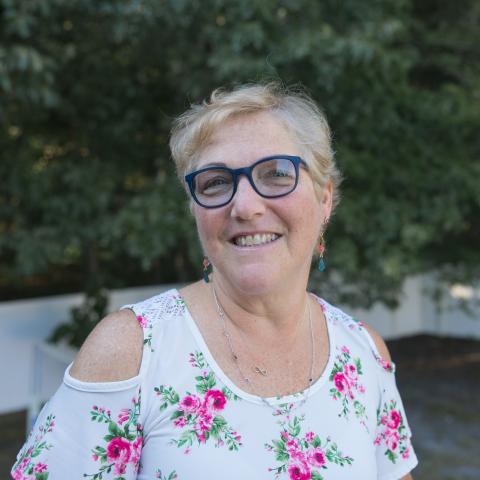
Jill Adelman is a retired ER nurse who was diagnosed with macular degeneration 9 years ago. Since her diagnosis, she has dedicated her life to sharing her story and advocating for herself and other with macular degeneration.
Download English Transcript PDF
MS. DIANA CAMPBELL: Hello, my name is Diana Campbell, and I am pleased to be here with you today for our Macular Degeneration Chat, “Maintaining Emotional Wellness: Living With AMD.” This Chat is brought to you today by the BrightFocus Foundation. Macular Degeneration Research is one of our programs here at BrightFocus. We fund exceptional scientific research worldwide to defeat Alzheimer’s disease, macular degeneration, and glaucoma. And we provide expert information on these heartbreaking diseases. You can find much more information on our website, www.BrightFocus.org. After a diagnosis of macular degeneration, it is only natural to feel a range of emotions. Today, we are going to talk about many of these emotions and reassure you that if you are having these feelings, you are not alone. In fact, BrightFocus partnered a couple of years ago to host some focus groups about this topic, and through the interviews with some of you who are on this call today, we found that the most common feeling reported by respondents was fear of their vision getting worse. Over 8 out of 10 people felt this way at least sometime in the past month. Frustration was the second-most common reported feeling, with many concerned about physical safety. The study also found that the frequency of experiencing these emotions can actually increase with the length of time since diagnosis. So given that, I think this is a really important topic, as your feelings and emotions will change throughout your journey. Today, we’re here to take a deeper dive on these feelings and others. I’m pleased to introduce our first guest speaker, Kiana Harlan. Kiana is a licensed clinical social worker and the owner of Kaleidoscope Dream Counseling, a mental health practice spanning across Colorado, Florida, North Carolina, and Virginia. As a dedicated psychotherapist, Kiana specializes in guiding adults through the intricate process of recovering from the impacts of interpersonal trauma, grief, loss, and anxiety. Her approach is holistic and explores the emotional, somatic, and relational dimensions of healing. Kiana, thanks so much for joining us today.
MS. KIANA HARLAN: Yeah, thank you so much for having me, Diana. It’s such a pleasure to be here. I’m so excited to dive into today’s topic.
MS. DIANA CAMPBELL: I am, as well, and I noticed we’ve had a lot of questions coming in about when we’re going to have this topic, and just so much interest, so we’re really grateful that you’re here with us today.
MS. KIANA HARLAN: Yeah, thank you.
MS. DIANA CAMPBELL: So, let’s get started. Kiana, you have such a unique view into this topic based on your own personal experience. As we get started, would you mind sharing your own personal journey with vision loss and how this led you to your work today as a psychotherapist?
MS. KIANA HARLAN: Yeah, so this topic is really, really personal to me. My journey started about 15 years ago when I was 13. At that time, I had this huge life-changing event where I very suddenly came down with a medical condition called pseudotumor cerebri. At that time, it was this condition that was very rare; not a lot of doctors were aware of the symptoms of it or how to treat it. So, when I came down with it, it was the summer between 7th and 8th grade, and I got very sick, had a lot of headaches, a lot of neck aches. And during that time, my vision started to fade, which being 13 years old was absolutely terrifying. I didn’t know what was going on. Doctors didn’t know what was going on. I didn’t know what to expect. And I ended up being in a hospital for a month, and about 4 days into my admission, I completely lost my vision. And because that damaged my optic nerve, it was irreversible. And after that time, I had to just completely change the way I was moving through life. I was still myself, but even at that time I felt like I had to change who I was because I did have this vision loss.
And I would say it was really the support and the assistance of people around me that helped me through that time, learning how to do things like read Braille, use assistive technology, use my white cane, things like that. Social workers, teachers of the visually impaired—they were all there in my corner. They were all showing me that this doesn’t have to be this life-ending event. It is life changing, but there are ways to move forward. So as I got older, recognizing the impact that that has had on me and has on other people, I wanted to also go into that field to be that support. So, I started out just in social work, wanting to go into vocational rehabilitation, but when I got into college I realized that there was a whole clinical field of social work, and I absolutely fell in love with that. That’s where I transitioned, because I realized that while I had a lot of support and a lot of resources—very tangible tools to get through—I didn’t really have a lot of emotional support. There weren’t really a lot of people around me that understood how deeply I was grieving, how deep my depression was, and how a lot of anxiety came from that time. So, when I found the clinical field, I realized I could be a social worker and become a psychotherapist, so I jumped all over it, because I wanted to be that support for people. I wanted to be that person that someone could go to and not just talk about it, but be able to talk to someone that had went through that. And while I may not have the exact same situation or the exact same experiences, I do know what it’s like to have this big life-changing event and have vision loss and all the emotions that come with it, all the ways that can affect our relationships, all the ways that can affect just our sense of self.
MS. DIANA CAMPBELL: Wow, Kiana. Thank you so much for sharing that. I can’t even imagine being that age and going through what you went through, but what a blessing to all of your patients and everybody listening here today for you to be able to share your unique angle on this topic and also through your own personal experience. We were very lucky to find you as a speaker.
MS. KIANA HARLAN: Thank you.
MS. DIANA CAMPBELL: So, just as your journey has been highly personal, everyone on the call today is also going through their own individual journey. Our plan is to look at some of the most commonly experienced emotions and then provide tips and ideas for how to manage the emotions. To structure this conversation, we’re first going to walk through defining some of the most common emotions that one might experience on their journey with macular degeneration. And once we have these defined, I’d like to talk about some specific interventions and tools that we can all use to manage these feelings. So, you mentioned grief and loss. Let’s go ahead and start with that. I think the, kind of, bundle of emotions here that are related but not, obviously, all the same are grief, loss, and then fear and uncertainty. We’re all somewhat familiar with grief and loss as it relates to losing loved ones, for example, but are the stages of grief for a medical diagnosis similar to the ones for actually grieving people that we’ve lost? And then if you could talk about some of the associated symptoms or related feelings as patients move through these stages? And then finally, how do fear and uncertainty change or further impact the emotions of grief and loss when related to a medical diagnosis?
MS. KIANA HARLAN: Yeah. Grief and loss—I’ll start with that one, because I think that talking about the stages of grief can really encompass the fear and uncertainty, as well. So, I know grief and loss, or the emotion of grief itself can feel like this really big, overwhelming thing that sometimes we don’t fully understand. But in reality, grief is there and it does serve a purpose, because when we’re grieving and we’re going through that process, it’s this very natural process that helps us to get through … to process these difficult situations so that we can get through the healing stage. There’s a famous psychiatrist, her name is Elisabeth Kübler-Ross, and she’s actually one of the people that developed one of those original stages of grief models. And hers, of course, did relate to death and dying and the mourning process that comes after that, but her stages have been translated into loss as it relates to a medical condition. She talks about five stages of grief, and that’s denial, anger, bargaining, depression, and acceptance. And so, I know as I lay those out, stage 1 to stage 5, it kind of seems like this very linear process where we move from denial into acceptance and bam, we’re good. But in reality, it’s not like that.
Usually what happens is we don’t even move stage 1 to 5, and they may not even be in that order. It’s just those are the stages that we may experience. Some may experience all of them, some may experience some of them, some may sit in one or the other for longer periods of time. We may go from one to the other and then back again multiple times because grief is not this linear start-to-finish process. I’ll just very briefly touch on each of these phases because I think it really captures a lot of the emotions that we tend to feel and experience when we’re going through vision loss. So, the denial stage, that one does tend to come first. The denial stage is really those moments of shock and disbelief. It’s a moment where we can feel the numbing effect of getting the news that maybe we were diagnosed with macular degeneration, and we’re going to lose our vision. And having those moments of, “No, no, this cannot be happening to me. There’s no way this is right.” Sometimes it can be this outright rejection of getting the news from our doctors, because we don’t want to initially accept that something’s happening that can change our lives in such a big way.
And so the next stage, anger, that’s really this very raw adaptive emotion that comes up. It’s almost like the opposite of denial, because where denial can be this numbing out, anger can feel productive, it gets us really heated. Anger is part of, just, this very natural survival instinct. I’m sure many people have heard about that “fight, flight, freeze” response that comes up. Anger can motivate us to fight. It can motivate us to fight for the life that we had before, the life that we may not necessarily be losing, but we may be on track to experience in a different way. We want to fight to get that back. We don’t want to let it go. And anger, or another purpose of anger, is when we feel threatened, something important to us or someone close to us feels threatened, and that’s being taken away, so we get angry in response to that. We may also feel really angry because this process of loss is also a loss of control in some regards. We didn’t wake up and ask to lose our vision. It’s not something that we want to allow to continue a lot of the time, so we’re kind of losing that control, and that also makes us angry.
And I think that flows really well into the bargaining phase, because that bargaining phase is where we’re saying or thinking that we’ll do absolutely anything to undo what’s been happening to regain that control. We may start to feel really vulnerable, and even sometimes helpless, when we’re in this bargaining phase, so that’s when we start to have those thoughts of “if only”—“If only I had visited my doctor sooner, if only I had lived a healthier lifestyle 10 years ago, this wouldn’t be happening.” And it’s not always realistic when we’re having those thoughts, of course, but we start to have those thoughts and thinking if I had done something differently, I could have changed the course of what’s happening now. We might start to bargain with ourselves or bargain with a higher power—so, thinking, “I will be a better person. If I could just stop or reverse this vision loss, I will contribute to charity, I will be just a better person in general.” It’s us trying to find these alternative solutions to get back what we’re losing.
And depression, this is one that I imagine a lot of people are very familiar with. Depression is an emotion that comes up in response to loss. When we’re losing something, that sadness starts to come up. Depression can also make us feel very lonely and isolated, like we’re the only person going through this and no one else can possibly understand the depth of this emotion. We can start to feel really hopeless, may start to get more tearful. We may intentionally isolate or withdraw from other people, maybe oversleeping, not getting enough sleep. Some people may have increased appetite or decreased appetite. Depression can really show up in so many ways in our lives. And, of course, this is a big one that I think a lot of people link to grief when we lose something: We get really sad. And this one is one when patients come in to see me, they don’t usually say, “I’m grieving,” they say, “I’m depressed,” because this is the one that they can identify with the most.
And then lastly, so the phase of acceptance. When I say “acceptance,” I don’t mean that we approve of something or that we’re welcoming of what’s happening, because more than likely we are not. Acceptance is just, “I feel sad. I may still feel angry. I may still have these senses of denial and disbelief. And at the same time, I recognize that this is my situation. I recognize that I’m going to lose my vision, and I recognize that there are going to be changes that are going to come along with this.” And acceptance is just being able to get to a point where we’re willingly integrating that into our lives. So, acceptance may be, “I’m still sad, and at the same time, I’m willing to connect with a social worker to see what my options are in terms of getting large prints or magnifiers so that I can still sit down and read my books.” And this is essentially, I’m putting down all these tools of war that I had where I was fighting against this, and I’m saying, “I’m facing this. I’m not going to keep pushing against this brick wall. It’s going nowhere. I’m going to turn around and figure out how I can take this unfortunate, heartbreaking situation and move forward from it.”
So, those are the five stages, and I think fear and uncertainty really it’s not a defined stage in the stages of grief, but it weaves through all of them. I mentioned earlier the survival instinct when I was talking about anger. Fear is a survival instinct. It’s an emotion that comes up when there’s a threat to our lives. And so, when we’re sitting with so much uncertainty after vision loss, we don’t know maybe what’s going to happen, how bad the loss is going to be. We don’t know what changes are going to come up. We don’t know what our limitations are going to look like. Essentially, we don’t know what our life afterward is going to look like, and that’s understandable, because if we’ve had vision, we haven’t had to sit down and think about that. We may not have the resources yet or know what’s out there, so everything feels very unknown. And it may feel like the life that I’m going to have after this is not the life that I want to live, or I’m not even going to be able to live my life. And so, that brings up that fear coming up, and it may start to cause our minds to spiral a little bit on those what ifs. We may start to catastrophize and even paint this picture that there is not a life to live afterwards. There can be so many challenges and limitations that I just can’t get through them, so that’s scary, not knowing what we’re going to have to give up, what things are going to look like. And so, we can get into that when we’re going into vision loss, and that can show up in so many different ways throughout the phases of grief. I personally think that fear or anxiety should be a stage of grief, and there are some researchers out there that are calling it a phase of grief, because while it shows up in those other phases it can also stand alone. There can be moments where we’re just feeling fear and uncertainty, and grieving and getting through; sometimes it can feel like that fear and uncertainty can stop it at times, because we don’t really know how to move forward to the next stage or get out of that fear and uncertainty.
MS. DIANA CAMPBELL: Well, you had the perfect segue to my next question. You talked a bit about depression, you know, in relation to the stages of grief, and then you mentioned anxiety. I know these are two kind of frequent emotions, and when people are thinking about their own mental wellness, these are frequently two words that are pretty common in our society’s vernacular and things that we’re somewhat familiar with. But if you could talk a bit more about anxiety and how that’s different than depression, and then any additional signs or symptoms that people should be aware of that they might be experiencing that would be defined as anxiety.
MS. KIANA HARLAN: Yeah, absolutely. I would say in my practice, depression and anxiety, those are the two things that people come in for. Those are the two things that people can really identify with the most. The way that I like to describe it is: Anxiety and depression, they’re like these two not-so-great, not-so-wanted friends that show up, and can crash the same party, but they both have their own unique styles in the way that they do it. So, anxiety is that very jittery, always-worrying-about-the-future friend. It’s like having this constant circus of butterflies in your stomach. And on the other hand, depression is more like that friend that shows up and brings the rain cloud to the party; it casts a shadow over everything.
When we’re looking at the signs or the symptoms of depression and anxiety, anxiety can often show up as restlessness, this looming sense of dread, like having this mental tornado sometimes. It’s always just swirling around in our minds. A lot of people have what I call “what if” questions. So, what if this happens, then this will happen? And most of the time, those “what if” questions aren’t positive. It’s not “What if I lose my vision and become a billionaire?” It’s “What if I lose my vision and my life ends?” That’s where anxiety colors that. And anxiety is one of those symptoms, too, that can also have a physical effect on us—we can start to get tense muscles, headaches, some people get an achy stomach or have diarrhea because they have GI upset because of anxiety. It can cause trouble sleeping, and then sometimes if anxiety gets really high, it can turn into panic, and panic is that tightness of chest, difficulty breathing. Some people can get really faint or dizzy when they’re feeling panic. Some people can get what we call paresthesias, where they feel these crawly or bug-like sensations on their skin. And some people can actually fall unconscious when they have panic or experience a panic attack. A lot of my patients that come in who have experienced panic, I wasn’t the first person that they visited—they went to the ER, because their anxiety and their panic got so bad that they thought they were having a heart attack, and that’s what those feelings felt like to them.
Depression, on the flip side, is kind of what I described earlier within the stages of grief that can bring about these really intense feelings of fatigue, this persistent low mood, and this general “meh” feeling, which we call anhedonia, which means, essentially, that we just take no pleasure in anything. Things that we used to really enjoy doing, they feel just very dark and gray. We can’t really connect with that feeling of happiness or joy in doing things that we used to find joy in. With depression, that may be that we don’t want to get out of bed, so we just keep hitting that snooze button, or when we get out of bed, it just feels like we’re wading through quicksand to even just get through the day and do very basic tasks. Depression and anxiety, to be honest, a lot of the times they show up together. They kind of team up together, or one hides within the other, or one can actually exacerbate the other, and it’s very normal for these to be two of the biggest emotions that come up in the vision loss process because when you think about it, depression is grief and anxiety is fear, and those emotions all go hand in hand. And grief and fear are two big emotions that come up when we experience a loss—and, in this case, vision loss—because there’s so much uncertainty and so many adjustments that are going on.
MS. DIANA CAMPBELL: Wow. Thank you for that wonderful description and a look at how they interplay with one another. A few other common feelings that people seem to experience as they learn to live daily with a new connection are frustration, being one of them that we hear a lot about and, along with that, guilt. With vision loss, we have to reimagine our approach to tasks, and the adjustment can be frustrating. Another topic that frequently comes up here is asking for help, which can be potentially uncomfortable and cause guilt or embarrassment. How can individuals begin to develop comfort when talking about their diagnosis or needs for assistance? People have mentioned things like not being able to see the documents they need to sign, not being able to read the cans at the grocery store. What are some ways that people can begin to—reminds me of what you’re talking about with acceptance—begin to develop acceptance and feel comfortable when talking about both their diagnosis, as well as their needs for assistance?
MS. KIANA HARLAN: Yeah. I would say one of the big pieces is giving yourself grace. And, even if you need to ask others, that this is a new experience for you and asking them to also give you grace, as well, because these are unchartered waters, it’s new. Frustration is going to come up. Frustration is one of those emotions that come up when we experience opposition or we experience these barriers or obstacles. And losing our vision is a pretty significant obstacle, something that’s new, something that we are trying our best to navigate at any given point in time. We may have these new limitations and we need to learn ways to maybe communicate in ways that we haven’t communicated before, to express the things that we need or the things that we want from other people. And if we’ve never had to do that before, then we’re going to start to get frustrated because we’re essentially in a learning process.
And when it comes to guilt and embarrassment, guilt is one of those emotions … I’ll just kind of define those a little bit. Guilt is an emotion that essentially comes up when we feel like we’ve done something that goes against our morals or our values or our beliefs. So, guilt is focused on a behavior that we’ve done, and embarrassment is an emotion that comes up when we have made a mistake or we’ve done something personally or socially and feeling that embarrassment helps us to change that behavior in the future so that we don’t go back and we don’t make that mistake again. Embarrassment can also sometimes creep into the emotion of shame, which goes hand in hand with guilt. I mentioned guilt is on the behavior; shame tends to be more internally directed at ourselves—so, I had to ask for help, so that means I’m not good enough. Shame tends to be an emotion where we start to beat ourselves up a little bit. And so, guilt- just a little note-guilt can show up a lot in the bargaining phase. I had mentioned earlier how, in the bargaining phase, we can have those “if only” thoughts: If only I’d gone to the doctor earlier, if only I had done this 10 years ago. We can start to feel guilty. “I did something that caused this.” Guilt is not always rational, as I’m sure many people know, but guilt can also come up if we feel like we have to ask for help, we may start to feel like we are a burden, and we may start to think, “I shouldn’t have to ask this person for help. This person shouldn’t have to take time out of their day to help me with this task.” And so when we feel those emotions, that guilt, some embarrassment, and that frustration, especially when it comes to asking for help. When I ran a support group a few years ago, for some reason that word “help” added a lot of heat to the situation. People didn’t want to feel like they needed help. So, we started to reframe it a little bit, that maybe it’s assistance because everybody—everybody—needs assistance at some point in time. And when we’re learning new things, everybody is going to need assistance a little more in the beginning because we’re just getting our feet wet, we’re just getting more comfortable. And especially when it comes to asking for help, a lot of people are very, very independent, so turning to someone and saying, “Hey, can you assist me with this?” may kind of grate against that independent nature that we have.
So, the thing that I would advocate for with this is increasing that level of comfort. That can be starting with us sitting down and really asking ourselves, “What do I feel comfortable sharing with others when it comes to my diagnosis?” Because you don’t have to share everything. You don’t even have to tell people why you need assistance if you don’t want to. So, sitting down and saying, “What do I feel comfortable sharing, and how do I want to share this?” When you’re asking yourself, “How do I want to share this?” especially if you’re thinking about, “How can I ask people for assistance?” it’s asking yourself, “What exactly do I need assistance with? Is it the whole task in general? Is it just pieces of the task? And how can I share that with another person?” For example, if I’m trying to cook my family’s favorite lasagna, and that task can be more difficult when I can’t see measuring spoons and the measuring cups and things like that, maybe I don’t want my partner to come in and help me cook the whole lasagna, but I say, “Hey, can you come here for a minute and just kind of assist me in measuring out the salt?” or something like that. So, just sitting down and really asking yourself, and then starting to share that with other people. You don’t have to go up to strangers and say, “Hey, I’m blind. Can you help me with this thing?” You can start with friends, family members, and people that you sit down with, and you’re sharing, “Hey, I’m going through this. This is how I’m feeling. Can you help me with this piece?” I think that comfort level and the more we do it, the more we lean into those emotions a little bit. I know sometimes that can feel uncomfortable, but leaning into some of those emotions, especially guilt. I always tell my clients that sometimes we have to sit down and we have to recognize the difference between warranted and unwarranted guilt. So, with guilt’s purpose being, “I did something bad that goes against my moral values and beliefs,” asking for help isn’t necessarily a bad thing. Did I really go against my morals and my beliefs by asking for help? And if the answer to that is no, the response is to lean into the guilt to get more comfortable with it, because eventually it’s going to go away.
MS. DIANA CAMPBELL: Wow, thank you for that. And I love just the concept of giving yourself grace and asking others for grace. I think that goes such a long way, and patience is definitely something that I think we’re all working to build up and practice more in our life. I think we’ve got a great list now of some of the common emotions and really wonderful definitions that you’ve laid out for us to help name and identify feelings that we might be having. I’d love to switch now to hearing some of your suggested strategies that can help manage some or all of these feelings. And let’s go ahead and get started with therapy or counseling.
MS. KIANA HARLAN: Yeah. So, therapy and counseling, I’m biased, but I think that that is an amazing resource, especially if you’re looking for a therapist that specializes in grief and loss, and even further than that, a therapist that specializes in vision loss, because that’s really going to be the space where you can go in and you can sit down and you can put it all out there. There doesn’t have to be a filter. There doesn’t have to be any censoring. Sometimes with friends and family we feel like we have to put on this brave face—I’m doing good. I’m getting through. When you’re in therapy, you don’t have to do that. You can go in and you can share, “I’m struggling. I don’t know how I’m going to get through this.” And your therapist or your counselor, they’re going to be the person that’s not only there to listen, but they’re also going to be the person that’s there, that helps you understand the emotions a little better, helps you normalize them, and then helps you get some very concrete strategies to be able to manage when those emotions come up. You can do individual therapy, if you’re the kind of person that likes to do one-on-one, or there are also therapy groups. Therapy groups can also lump support groups into this, as well. Those are so valuable because they provide the connection to other people, and especially if you can find a support group that’s around vision loss, the people that are around you are people that are going through a similar situation and are experiencing a lot of similar emotions and similar adjustments, as well. So, the depression phase of grief can make us feel really alone, like no one else can understand what I’m going through. When you get into those groups, you see that there are people that can understand. So individual therapy is great. If you can pair with a support group, I think it’s going to be even more beneficial to have that peer-to-peer connection.
MS. DIANA CAMPBELL: Great. Along with a more appointment-based or a medical intervention, what role does medication play, if any, in beginning to address specifically clinical feelings like depression and anxiety?
MS. KIANA HARLAN: Yeah. Medication, I view that as a stabilizer, especially when it comes to depression and anxiety, so it definitely can play a role. I don’t always advocate to go straight to medication first, unless the emotions—depression, anxiety, things like that—are so intense that they are interfering with your ability to even attend therapy, use skills, things like that. Medication is really going to be the option that’s really going to help to stabilize those emotions. Antidepressants and anti-anxiety medications are really awesome. Most of my clients do take some version of antidepressants or anti-anxiety medications, and it works so much for them, because they’re able to come in and they may still have the emotion, but the emotion isn’t so loud. The volume’s not at 10; the volume might be at two or three, and it feels more manageable when it’s lower like that.
MS. DIANA CAMPBELL: Absolutely. You mentioned briefly connection to others in the context of group therapy. What is the importance of connection overall when coping with a diagnosis like this?
MS. KIANA HARLAN: So, there’s a grief expert. His name is David Kessler, and he said something about grief that I think really encapsulates that. And he said, “We’re human beings. We’re wired for connection. Grief is not meant to be experienced solo. Grief is meant to be experienced as a community,” and I think that right there just highlights all of that. When we’re by ourselves, that can be the moments where our minds are racing, it can be the moments where it’s harder to get out of bed because staying in bed can actually deepen the depression and deepen the anxiety. When we have other people around us that are supporting us, other people around us that are able to understand and connect with us, then that essentially lightens some of that load a little bit, some of that load that’s on our system so we’re not just carrying it alone—we’re able to get support from other people, motivation from other people, and it doesn’t feel as heavy to go through that.
MS. DIANA CAMPBELL: Great. I’m going to list a couple of others and kind of let you talk about them. We know there’s a role of exercise into mental health, including yoga; and then I’ve kind of categorized it as inspiration—things like reading books, listening to audiobooks, journaling, listening to podcasts; and then other kind of mindfulness tools, like breathing and meditation. What can you tell us about some of these approaches to managing emotions?
MS. KIANA HARLAN: Yeah. All of those are great resources and are resources I definitely bring into my practice. I’ll start with the meditation piece, and I’ll kind of weave that into yoga because those are two big pieces, I do a lot of somatic work. Mindfulness is really, really going to help bring us into the present moment. And that doesn’t mean that it’s going to make everything better because our present moment is probably really crappy—we’re going through vision loss. But the mindfulness means that we’re not carrying all the baggage of 10 years ago, and we’re not carrying all the “what ifs” of, you know, “What happens when I fully lose my vision, or what happens if XYZ happens?” We’re just in the moment, and we’re just allowing ourselves to find ways to manage in the moment. Meditation is a really good mindfulness resource. There are a couple apps that you can use on your phone. Calm and Headspace are two of them where you can just go on, and you can put in earbuds or listen to it on the speaker, and they have so many different guided meditations. They have short ones and long ones and meditations for sleep and meditations for anxiety. And so, that’s really good because it helps our brain focus on something. We’re able to direct it to something that’s not just this spiral of anxiety or this deep hole of depression. And then yoga can go into that because yoga is very grounding. And yoga also gives that body connection as well, which I think is really important when it comes to any kind of healing process, because part of feeling an emotion is the somatic piece and feeling it in our bodies as well. So, yoga can be very grounding. We’re focusing on move by move. Yoga also … sometimes when we’re having medical issues, we can start to disconnect from our bodies. Sometimes even start to hate our bodies. Why did my body do this? Why did my body let this happen? But yoga allows us to start to foster more grace for our bodies and recognize that our bodies are doing the best they can, our bodies are keeping us alive, and kind of get that more centeredness within the body.
The inspiration piece: listening to audiobooks, listening to podcasts from other people that have experience—that kind of goes back into that not feeling so alone. And then the journaling gives another outlet for sharing—so, maybe you don’t feel comfortable sharing certain pieces of your journey or what you’re experiencing with people around you. Journaling is an amazing way to get that out so we don’t keep it bottled up. You can do, of course, handwriting journaling if you wanted to, but there’s also audio journals or voice journaling. And there’s a lot of apps for that, as well, where you can go on and you can just talk. Talk into your phone, talk into a microphone, and you’re just verbally journaling whatever it is that you’re experiencing.
And then lastly, I’ll just touch on yoga kind of goes into it, but exercise is a really good one. Exercising helps us not only with that body connection, but also exercising releases happy hormones. So, while we may not feel good while we’re exercising, a lot of the times afterwards, because that dopamine is being released, it can boost our mood, so that can help to cultivate more pleasant or more wanted emotion. And there is a very solid resource for that. There’s a virtual gym called Couch to Active that specializes specifically in exercise for people who are blind and visually impaired, or also for people who may have mobility limitations. All of their classes are held online. They do about 15 classes a week from cardio to stability to strength to yoga and Pilates. And there’s different versions of those. Couch to Active is a great resource if you want to just get into exercising. It’s a very low-pressure environment. They know that everyone’s coming in with different abilities, so they really work with you, and it’s all on Zoom. And they also don’t require you to have a camera on, so if you just wanted to pop in, you could do that as well, so that’s a really good resource for helping with that exercise piece, too.
MS. DIANA CAMPBELL: What great advice for everybody listening. We’ll make sure to include that on the transcript under the resources, and we’ll provide you a link to that. I’m going to skip ahead a little bit just so that we’re leaving enough time to hear from our second speaker. But in summary, we’ve heard from many folks that they’re frustrated because they bring their concerns about their mental wellness to their retina specialist or other eye doctor. Given that this isn’t their specific area of training and expertise, and paired with the fact that patient treatment visits are so short and difficult to get questions answered, what resources are available, or how do you suggest people go about finding therapists or other specialists that can help them with this topic?
MS. KIANA HARLAN: Yes, so there’s a couple of directories that are really good about finding therapists. Psychology Today, of course, is a really popular one. There’s also one called Mental Health Match and then TherapyDen. And those I highly recommend to people because they have the ability to go in and filter when you’re looking for a therapist. You can specify what you’re looking for. Psychology Today, in particular, has a whole category to therapists that are aligned with certain populations. In Psychology Today, you can look for blind-allied therapists, and then look in there and then look at their profiles to see, do they specialize in grief? And then you can call them. I highly recommend calling around asking to do consultations with therapists—it’s usually about 10 to 15 minutes—so you can get an idea of who they are as a therapist, what kind of approaches they use, what they specialize in. So, those are three really good resources—Psychology Today, Mental Health Match, and TherapyDen. They also post psychiatrists and nurse practitioners, so that medication piece that you mentioned earlier, Diana, if you wanted to go and explore that as well, you could go on there and you can just filter by psychiatrist rather than therapist.
Also, your primary care doctor, believe it or not, is going to be a pretty good resource as well, especially with things like depression and anxiety, since that shows up a lot in grief. Most people visit their primary care doctor first. Your primary care doctor, while they may not be a specialist, they’re also going to be kind of this touchstone if you’re experiencing depression or anxiety. Some of them can prescribe some psychiatric medications if that’s the route you want to go down, but also if you come in and you’re presenting with depression or anxiety, your primary care doctor probably has a screener that they have you do, and they’re going to be able to also link you with some therapists. A lot of therapists do reach out to primary care doctors, so they’re actually going to have a list of people that they can at least send you, and then you can browse as well.
MS. DIANA CAMPBELL: That’s a great tip right there, too, that I think once we’ve gone down the route of specialists, sometimes we forget to go back to the basics.
MS. KIANA HARLAN: Yup.
MS. DIANA CAMPBELL: So, we’re going to move on to our next speaker, Jill Adelman, in just a moment. Do you have any final comments before we transition over to here from Jill about her mental health journey?
MS. KIANA HARLAN: Just that if anyone does need support, I do serve the states of North Carolina, Colorado, Virginia, and Florida. However, if someone is outside of the states that I serve, I’m also linked to the wider therapist network, so I am always happy to have anyone reach out to me, and I’ll reach out to the other therapists, and I’ll send you some names of people, because I want to make sure that everyone is supported. So, everyone that can go to my website, it’s www.kaleidoscope-dream.com. And there’s a contact form on there. My number is also on there, so if anyone ever needs some support or just feels really overwhelmed at the thought of getting on a directory and looking through hundreds of profiles, just reach out to me, and I’m happy to help you simplify that process.
MS. DIANA CAMPBELL: What a kind offer, Kiana. And I think sometimes that first step is the hardest to take, so just having a website resource or a person in mind can make the difference. And you can certainly always follow up with us here at BrightFocus. Thank you so much for all that helpful information. We’ve got about 10 minutes, so this will be a quick little view into one person’s experience. Jill Adelman has been a member of the BrightFocus community for almost a decade, and she’s going to talk about her experiences adjusting to her diagnosis. Jill was still working when she was diagnosed and had to retire as a trauma nurse when she was diagnosed about 9 years ago. Since her diagnosis, she’s dedicated her life to sharing her story and advocating for herself and others with macular degeneration. Jill, could you start us off by sharing the impact the diagnosis had on your mental health, especially when you were first diagnosed? Many of us who are familiar with you in the AMD Community Circle and other groups see how active you are today and knowledgeable, but you went through a pretty difficult process emotionally as Kiana was describing above. What did that journey look like for you?
MS. JILL ADELMAN: First of all, thank you for this opportunity, Diana. The diagnosis of macular degeneration put my head into a total spin, as it would for anyone, with all the major questions of, “What’s going to happen in the future?” With there being no answers to that question, you take one day at a time. Unfortunately for myself, it had a greater impact than I had ever realized initially, and I ended up in the intensive care unit with what is called takotsubo, otherwise known as broken heart syndrome. Fortunately, it has resolved today, but the impact of the loss is what caused it. And the way I know that is cardiologist sat at the end of the bed and said to me, “What’s going on in your life?” When I told him about my career, the diagnosis of macular degeneration, and the great fear that I had that I’d never be able to be the caregiver and go back to the job that I so much enjoyed, he then explained to me that the loss of my vision is loss and that I was going to have to find help to be able to learn how to deal with all of these changes that are going to now go on in my regular daily routine. He was the first one that really put this into my head. From there I was able to because of being in the health care profession, I used my own resources and knew that I needed help. And through—in my case—our insurance, I was able to advocate that I knew I needed some help, and I reached out to the insurance company, who was then able to channel me through someone that was going to work with me for quite a few of the next months. And that’s what I did. I went, I screamed, I cried, I carried on, but it was a way of getting out all the emotions that were locked inside of me, because every day is a challenge, and now I needed to learn a whole new way of life.
MS. DIANA CAMPBELL: As you started with therapy, and over time as you were beginning to adjust to the challenges, what are some of the top tips you’ve picked up along the way, both for beginning to address the challenges and then dealing with kind of the emotions that follow from that initial shock and grief and loss? What tips would you share about that journey and then about managing day-to-day life now? What have you learned?
MS. JILL ADELMAN: Now, on a daily basis—every day—whatever things I need to do for the day, if I find that I’m having difficulty, I always sit down, take a nice deep breath, try to relax myself, and think about what it is I have to do and what changes that I’ll have to make be able to accomplish the task that is now frustrating me. The only way I was going to get through the frustration is to figure out what it was that I needed to do to be able to accomplish it. I’m never afraid. I’m a kind of vocal person, so I’m never afraid to say, “Hey, somebody needs to give me some assistance here.” I do use the word “help.” I do ask for help. I had a long time coming before the word help was easily coming my way. But over the course of the 9 years, I have now decided, and I stand on the soapbox and say, “Wait a minute. I might look normal, but I’m visually impaired, and I need your assistance to get this done,” or “What can we do to make this easier for the people in the world that are low vision to get these tasks done so that we’re not experiencing the frustration that I’m experiencing today?” So, every day is a learning process, but I do one thing at a time. Whatever the task at hand is, I work to accomplish that task and figure out the ways to do it, and then I move on to the next thing. I try to keep myself very busy. I haven’t allowed myself to say, “This is going to get me.” I haven’t accepted the negatives. I think about the positives. I think about all of the positive things that could possibly be coming down the pike, because a positive attitude I’m hoping to lead to a positive outcome.
MS. DIANA CAMPBELL: Absolutely. How long would you say, Jill, that it took you to kind of find your voice? You know, as you moved through the acceptance phase and kind of got through the, as you said, carrying on and screaming and crying, how long was it before you began to feel comfortable with whichever word it is—help or assistance? Is that a process, as well, or is that sort of something that you had to mentally just decide, “I’m going to start doing this”?
MS. JILL ADELMAN: I would say the first few years, I lived in a bubble, as I call it. I didn’t talk about it very much. I didn’t reach out very much. I was still in such a state of confusion. Why was this all happening to me? And then with the help of my husband, who is a very big supporter for me, quite honestly, we found BrightFocus. And when I got involved and saw how many people were out there with the same questions, the same issues, looking for some sort of answers, even if there were no definitive answers, that’s where it started to make me believe that, “Wait a minute, I’m a registered nurse. I advocate for my patients. That’s what I love to do.” But this is the path that it’s put me on, and I took that, and I ran with it, because I feel that everybody needs an extra voice, just like you might need extra eyes and ears when you’re at a doctor’s visit, so I decided that’s what gave me the strength to do what I do today to try to help anybody out there. And I feel as though one bit of help or information that I can relay is worth everything that I do, but it does take a long time. But I just seem to be getting more and more vocal and stand on more and more soapboxes because we deserve all the help we can get. And the help is there, you just have to know where to find it. So, looking for it and getting the help that everyone needs, you have to just open your mind and be willing to accept it. Accept the help. You don’t have to accept the vision loss, but you can accept the help to get you through learning how to deal with the vision loss.
MS. DIANA CAMPBELL: I love the way you said that. Unfortunately, we’re running low on time here. I do want to make a shameless plug, and Jill can mention a few words about this. Here at BrightFocus, we have a group called AMD Community Circle. We have two different groups, one on Wednesdays and one on Fridays, once a month, where we get on Zoom, and everybody on that Zoom is someone that’s coping with their diagnosis of macular degeneration or, like Jill, are further along in their journey. And we just started this a handful of years ago as a forum for you all to get to know one another and share tips, sometimes just vent. Would you like to add anything about the Community Circle, Jill?
MS. JILL ADELMAN: Absolutely. I think the association with the Community Circle, in my opinion, has brought me the most resources, the most feeling of, “I’m not alone,” the most information from people dealing with things worse than me, not as bad as me. But we all can have that one general fear of, “What is this going to do to us?” And then we get to talk about it. And just by talking about it with people that are dealing with the same exact feelings, just gives you, from an individual standpoint, salvation. It gives you solace, and I find that so important for those of us in this situation.
MS. DIANA CAMPBELL: Absolutely. And I think one of the beautiful things that has kind of begun to happen as part of this is individual friendships have developed outside of the Community Circle. And I think, given what Kiana was talking about, about connection, I just think for many people when we first started Community Circle, they said they had never met another person that was going through the same thing. So, at the very basic level, that’s kind of the goal, is to introduce everyone to one another. And there’s everything from tips on magnifiers and questions that people have—you know, “My doctor said this. Have you guys heard that before?” There’s never a set agenda. Folks submit questions ahead of time, and we do our best to kind of jump around and let everyone have a chance to talk. So, I guess we’re going to kind of have to close out here, Jill. Do you have any final quick tips for staying engaged or resources that you would recommend?
MS. JILL ADELMAN: All I can say at this point, and I truly believe: Reach out. Look for any way that you can get help to even just verbalize your feelings, your frustrations, your anxieties. Take the minute and jump onto the BrightFocus Foundation, and maybe even join one of the Community Circles because you will get so much out of it.
MS. DIANA CAMPBELL: Thank you so much for your time today, Jill, and honestly, for all the inspiration—you’ve been at this for a while—and the tips that you share on an ongoing basis. So, both Jill, to you, and to Kiana, thank you so much to you both for sharing your stories and providing such a wonderful overview of all the emotions that come into play and plenty that we haven’t mentioned. I think the bottom line is in defining what we’re going through and reaching out as the first great step to beginning to heal and cope with this difficult diagnosis. To our listeners, I sincerely hope that you found today’s Chat helpful. Our next BrightFocus Macular Chat will be on Wednesday, February 28, and in honor of AMD Awareness Month, the topic is, “Macular Degeneration: Get the Facts.” We’ll have an expert on the call who will take any and all questions that you have. Again, thank you to our guest speakers and to our listeners for joining us today, and this concludes the BrightFocus Macular Chat. Have a wonderful day. Thank you.
This program is supported in part by educational grants from:




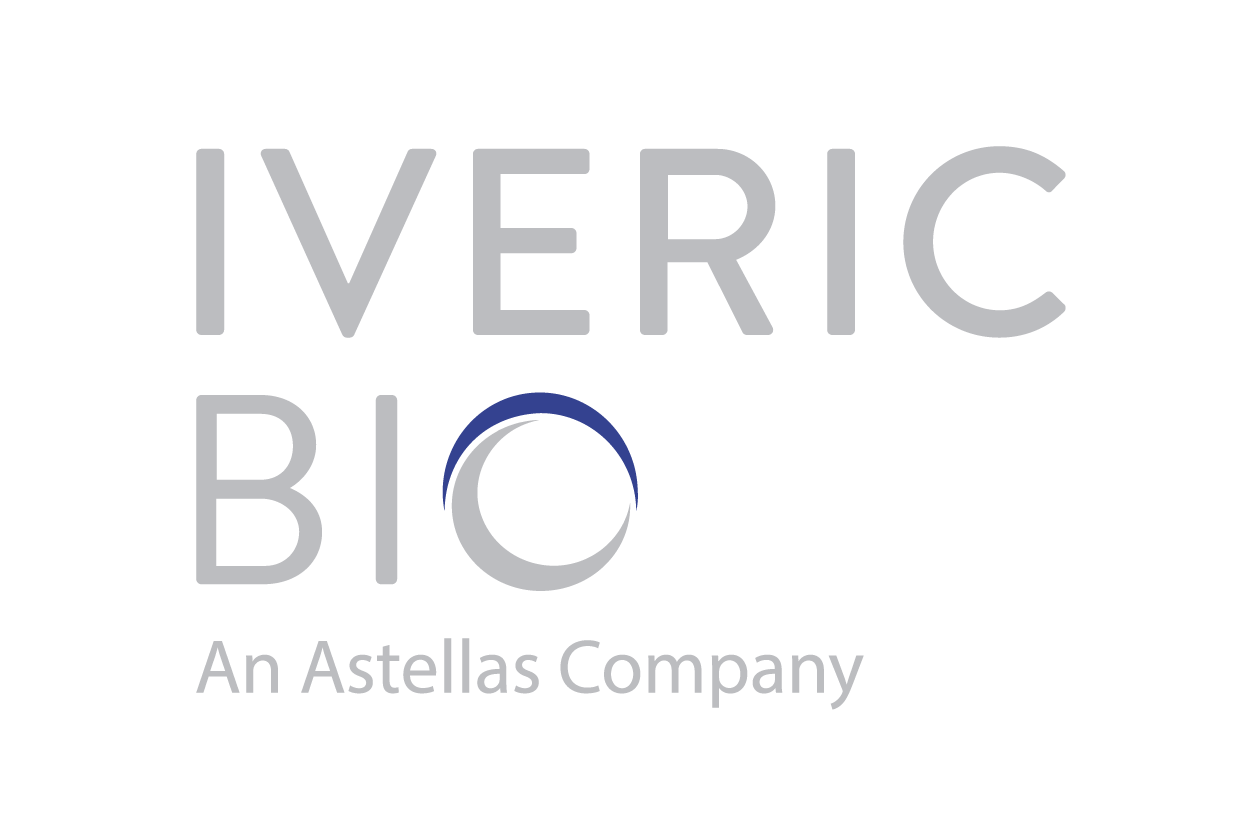


BrightFocus Foundation is a premier global nonprofit funder of research to defeat Alzheimer’s, macular degeneration, and glaucoma. Since its inception more than 50 years ago, BrightFocus and its flagship research programs—Alzheimer’s Disease Research, Macular Degeneration Research, and National Glaucoma Research—has awarded more than $300 million in research grants to scientists around the world, catalyzing thousands of scientific breakthroughs, life-enhancing treatments, and diagnostic tools. We also share the latest research findings, expert information, and resources to empower the millions impacted by these devastating diseases. Learn more at brightfocus.org.
Disclaimer: The information provided here is a public service of BrightFocus Foundation and is not intended to constitute medical advice. Please consult your physician for personalized medical, dietary, and/or exercise advice. Any medications or supplements should only be taken under medical supervision. BrightFocus Foundation does not endorse any medical products or therapies.
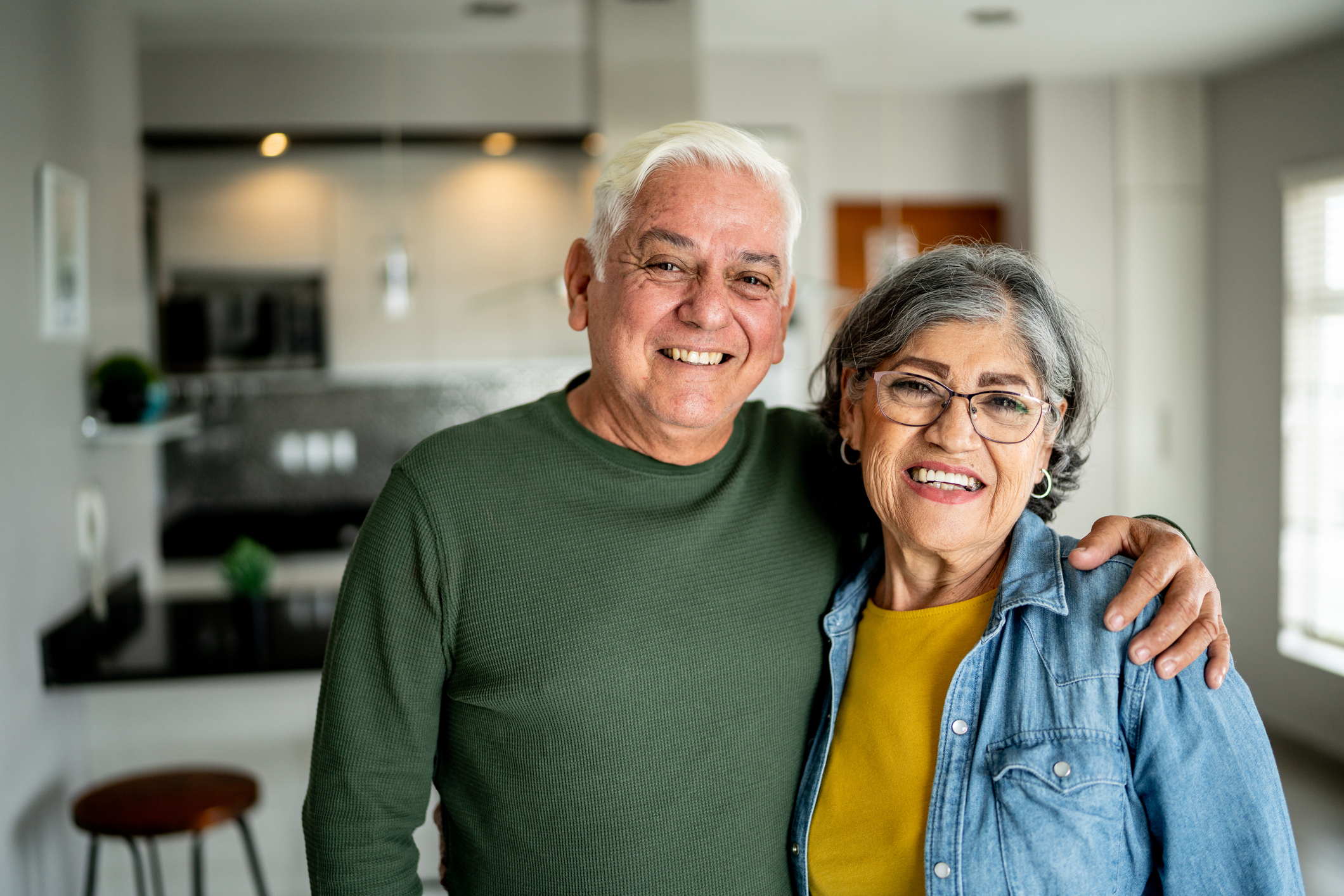
In recognition of National Caregivers Month, this episode explores the vital role of those who support individuals living with vision loss—whether family members, professionals, or volunteers.

Dr. Jeffrey Stern and Dr. Sally Temple, Principal Investigators and Co-Founders of the Neural Stem Cell Institute, will explain what stem cells are and share the latest updates from clinical trials.
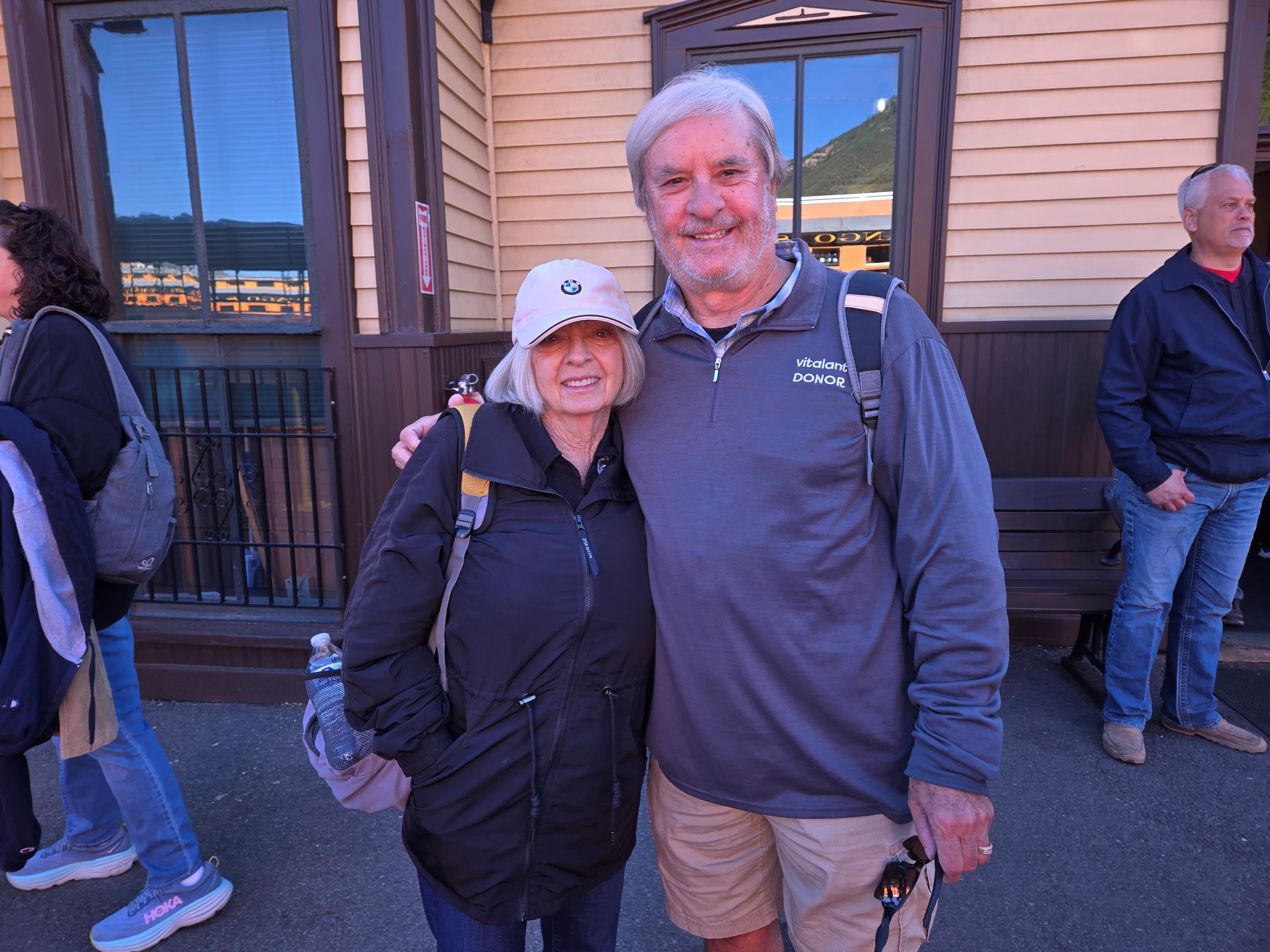
Dave and Leanna Palmer share their commitment to supporting Macular Degeneration Research.

Resources and information that provide products, services, and other support for people with macular degeneration and their families.
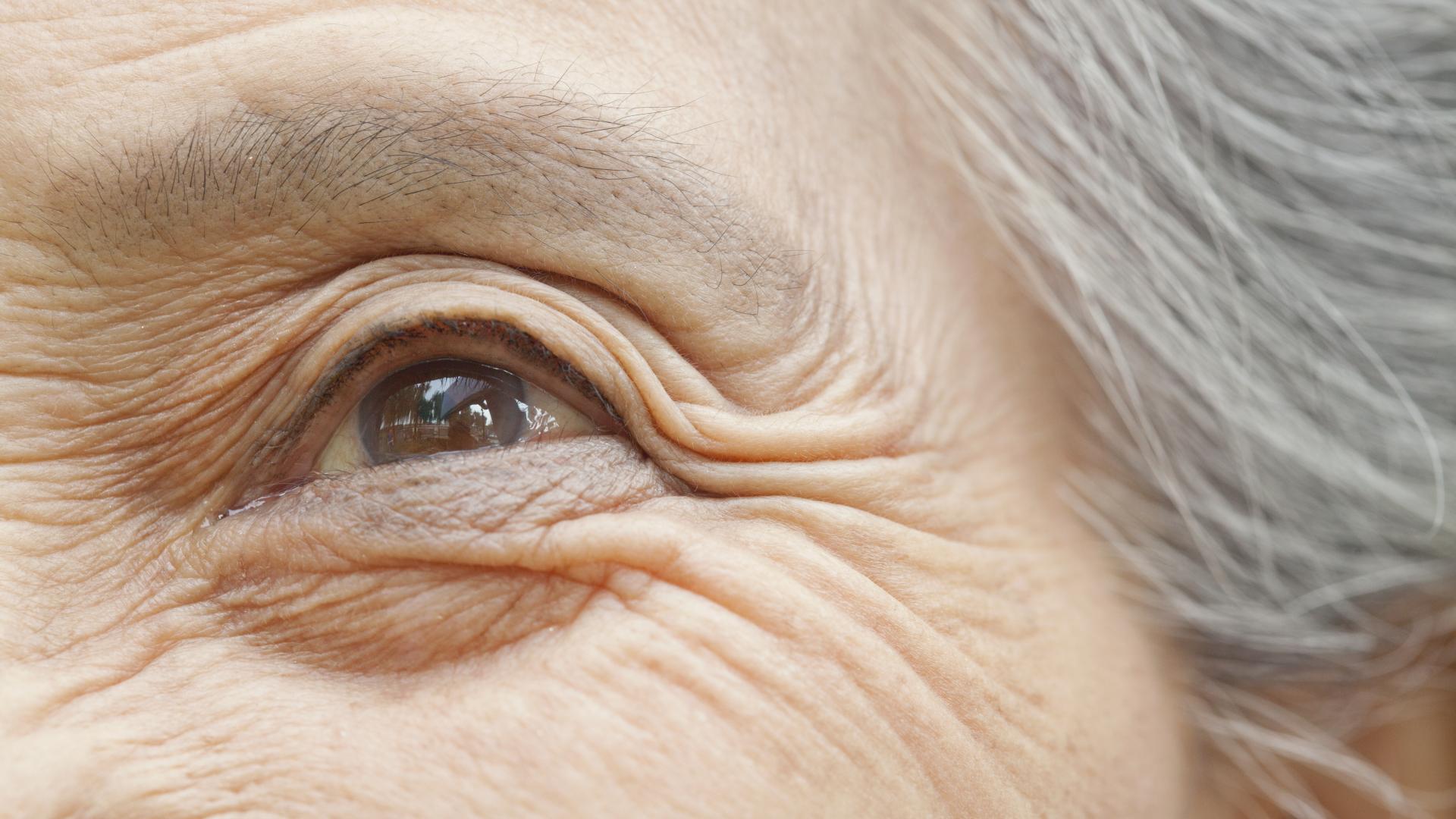
Join Dr. Sara Fard, a retina specialist at Illinois Retina Associates, as she explains the benefits of sustained GA treatment, including slowing the rate of vision loss, protecting retinal tissue, and supporting daily visual function.
Help Fight Macular Degeneration and Save Sight
Your donation helps fund critical research to bring us closer to a cure for this sight-stealing disease and provide vital information to the public.
Donate Today